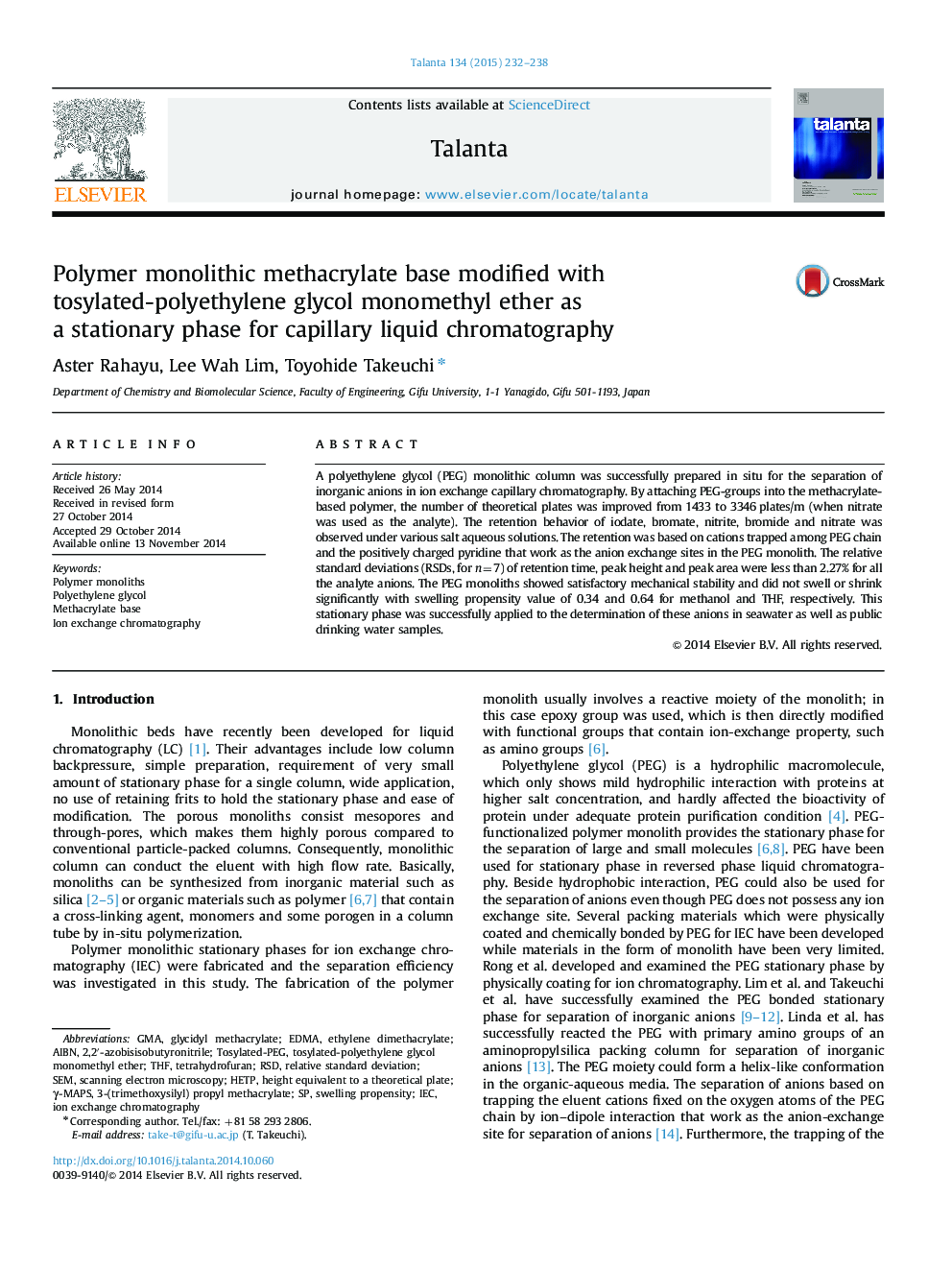| Article ID | Journal | Published Year | Pages | File Type |
|---|---|---|---|---|
| 1244073 | Talanta | 2015 | 7 Pages |
•A polymer monolithic column modified with tosylated-PEG was fabricated.•Eluent cations were trapped among PEG chains and acted as the exchange sites.•The number of theoretical plates before and after attaching PEG groups was compared.•Monovalent inorganic anions were satisfactorily separated and UV detection was used.•Inorganic anions in seawater and public drinking water samples were determined.
A polyethylene glycol (PEG) monolithic column was successfully prepared in situ for the separation of inorganic anions in ion exchange capillary chromatography. By attaching PEG-groups into the methacrylate-based polymer, the number of theoretical plates was improved from 1433 to 3346 plates/m (when nitrate was used as the analyte). The retention behavior of iodate, bromate, nitrite, bromide and nitrate was observed under various salt aqueous solutions. The retention was based on cations trapped among PEG chain and the positively charged pyridine that work as the anion exchange sites in the PEG monolith. The relative standard deviations (RSDs, for n=7) of retention time, peak height and peak area were less than 2.27% for all the analyte anions. The PEG monoliths showed satisfactory mechanical stability and did not swell or shrink significantly with swelling propensity value of 0.34 and 0.64 for methanol and THF, respectively. This stationary phase was successfully applied to the determination of these anions in seawater as well as public drinking water samples.
Graphical abstractFigure optionsDownload full-size imageDownload as PowerPoint slide
